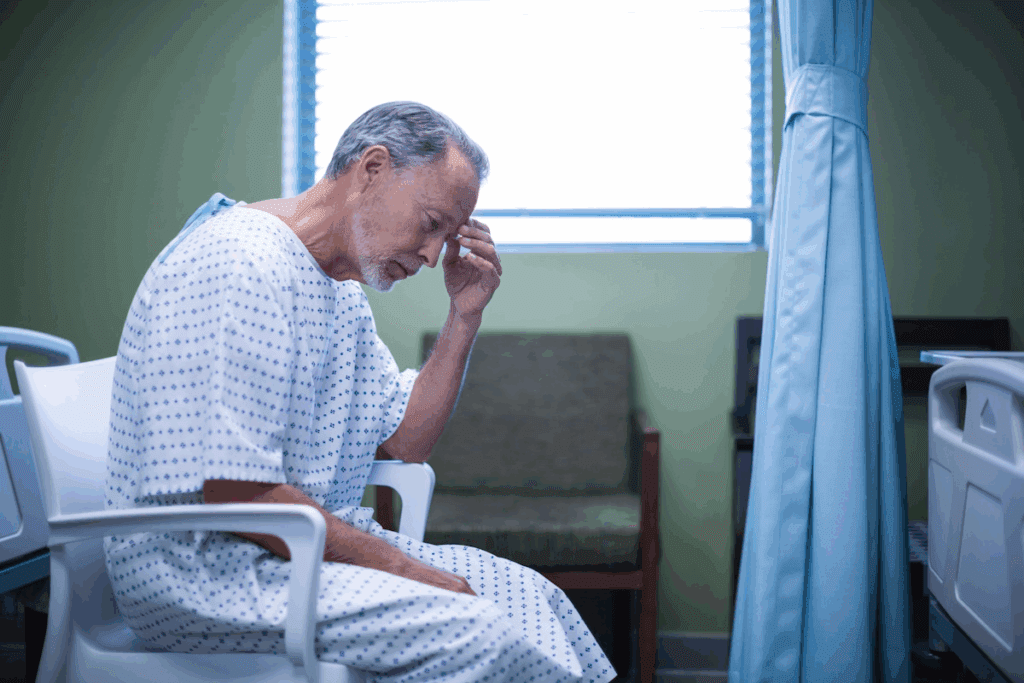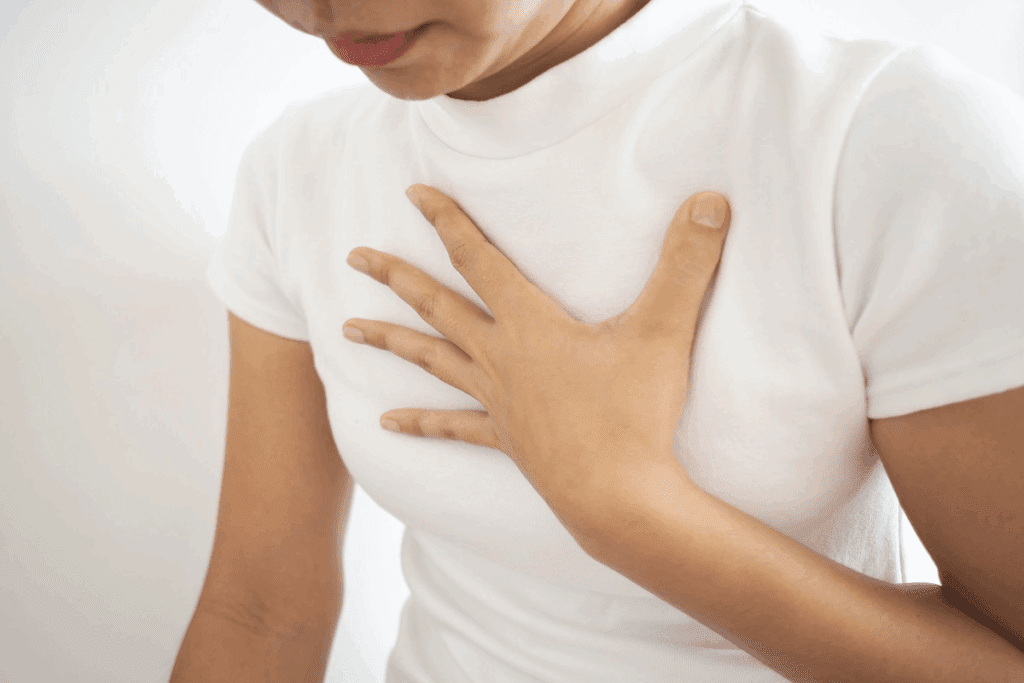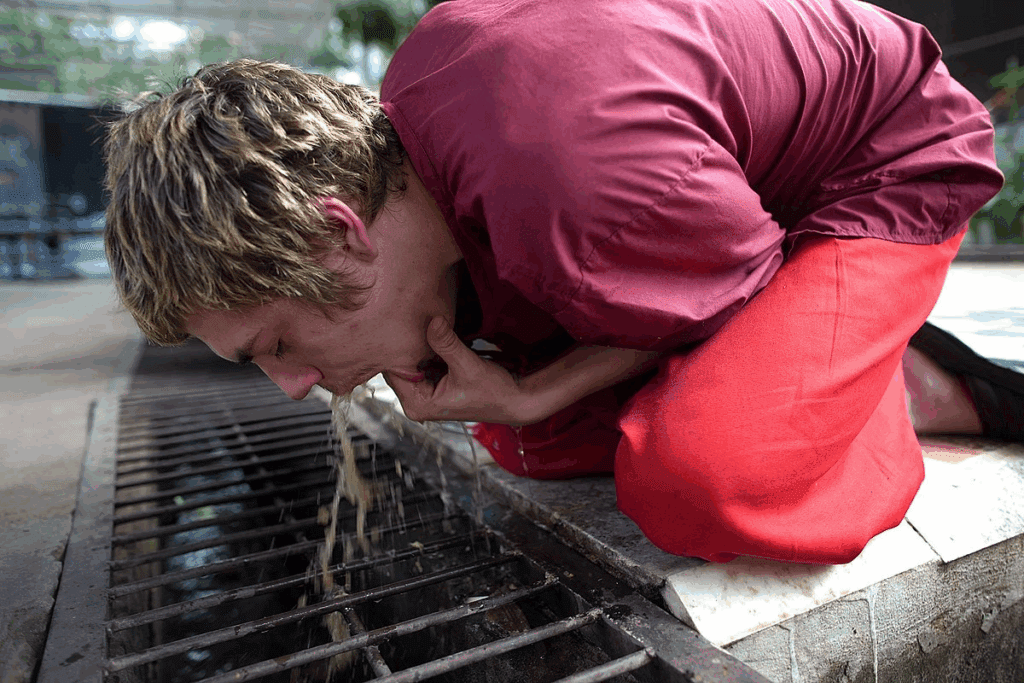Last Updated on November 25, 2025 by Ugurkan Demir

Chest pain after a viral illness can be scary, and it often involves the heart. At Liv Hospital, we focus on advanced, patient-centered care. We look into the seven key reasons for chest pain after being sick and when to get help.
It’s important to know why chest pain happens after being sick.chest hurts after being sickChest Syndrome Symptoms: Crucial Signs & Treatments Viral infections can cause heart muscle inflammation, known as myocarditis. Other reasons include pericarditis and pleurisy.

After being sick, chest pain can be scary. It’s important to know why it happens. Many people worry about chest pain after a viral infection. We need to look into how viruses and chest pain are linked.
Viral infections can harm the heart and tissues around it, causing pain. Myocarditis, an inflammation of the heart muscle, is a possible complication. We’ll see how viruses lead to chest pain and what it means for getting better.
Some important things to think about:
There are many wrong ideas about chest pain after being sick. For example, some think all chest pain is heart-related. But, pain can also come from costochondritis, an inflammation of the rib cartilage, or pleurisy, an inflammation of the lung lining.
It’s key to remember that:
By understanding the link between viral infections and chest pain, and clearing up common myths, we can handle post-illness chest pain better.

Myocarditis is when viruses harm the heart muscle, leading to inflammation. This can cause chest pain, irregular heartbeats, and even heart failure. It’s a serious condition that affects heart health.
Myocarditis means the heart muscle is inflamed. Viruses often cause this by attacking heart cells. This leads to an immune response and inflammation.
The main viruses causing myocarditis are coxsackievirus, adenovirus, and parvovirus B19. These viruses damage heart muscle cells. This damage can impair the heart’s function.
The chest pain from myocarditis can feel sharp or pressing. It might get worse with deep breathing or lying down. Sitting up or leaning forward can help.
In some cases, the pain feels like a heart attack. If you have severe or unusual chest pain, see a doctor right away.
Several viruses can cause myocarditis. These include:
Knowing the causes and symptoms of viral myocarditis is key. If you have chest pain or other symptoms, see a doctor. They can help diagnose and treat the condition.
The pericardium is a sac around the heart that can get inflamed after a virus. This leads to pericarditis, causing chest pain. It’s important to know about pericarditis to manage it well and avoid complications.
Diagnosing pericarditis can be tricky because its symptoms are similar to other heart problems. Yet, there are signs that make it stand out. For example, pericarditis pain is sharp and gets better when leaning forward but gets worse when lying down. This is different from the pain of a heart attack, which is more constant.
Key diagnostic features of pericarditis include:
Pericarditis symptoms often start with chest pain. This pain is sharp and can spread to the neck, shoulders, or back. It can get worse with movement, deep breathing, or coughing. Other symptoms like fever, fatigue, and palpitations may also occur.
“The pain of pericarditis is often described as sharp and stabbing, and can be quite distressing for patients.” – Medical Expert, Cardiologist
Managing pericarditis involves reducing inflammation and easing symptoms. Doctors often use anti-inflammatory drugs like NSAIDs or colchicine. In severe cases, corticosteroids might be used, but with caution due to side effects.
Recovery from pericarditis can vary:
It’s key to follow up with a healthcare provider to track recovery and adjust treatment as needed. Knowing about pericarditis helps us manage it better and improve patient care.
Chest pain after being sick can sometimes be due to pleurisy. This is an inflammation of the pleura, the lining around the lungs. Pleurisy can happen after a respiratory infection, causing sharp, stabbing pain that gets worse with breathing or coughing. We will look at how respiratory infections can lead to pleurisy, how to spot pleuritic chest pain, and what treatments are available.
Respiratory infections, like viral and bacterial ones, can cause pleurisy. When the pleura gets inflamed, the two layers rub against each other, causing pain. The pain’s severity depends on how much the pleura is inflamed.
Several things can make you more likely to get pleurisy after a respiratory infection. These include:
Pleuritic chest pain feels like sharp, stabbing sensations. It gets worse with deep breathing, coughing, or sneezing. The pain usually happens on one side of the chest and can come with other symptoms like shortness of breath, fever, and cough. It’s important to tell the difference between pleuritic chest pain and other types to get the right treatment.
Treatment for post-viral pleurisy aims to manage symptoms and treat the cause. Common treatments include:
| Treatment | Description |
| Anti-inflammatory medications | To reduce inflammation and alleviate pain |
| Pain management | Using analgesics to manage chest pain |
| Rest and hydration | To help the body recover from the infection |
Understanding pleurisy and its link to respiratory infections is key to managing it well. By recognizing symptoms and getting the right medical care, people can ease their pain and avoid more serious problems.
Being sick can lead to costochondritis, a condition causing chest pain and tenderness. It happens when the cartilage connecting the ribs to the breastbone gets inflamed. This is known as the costosternal joints.
Coughing and being sick can start costochondritis. A strong cough from a respiratory infection can strain the chest. This strain causes the costosternal joints to get inflamed.
This inflammation leads to pain and tenderness. It might feel like heart pain, but it’s not.
Telling costochondritis apart from heart pain is key. Heart pain usually goes to the arm or jaw. But costochondritis pain stays in the chest and gets worse with movement or deep breaths.
| Characteristics | Costochondritis | Cardiac Pain |
| Pain Location | Localized to the chest wall | Often radiates to the arm or jaw |
| Pain Triggers | Worsens with movement or deep breathing | Can be triggered by exertion |
| Nature of Pain | Sharp or aching | Pressure or heaviness |
Managing costochondritis needs self-care and sometimes medical help. Here are some self-care tips to help:
Knowing about costochondritis and using these self-care tips can help manage symptoms. This way, people can recover better.
Post-viral dysautonomia is a condition where the autonomic nervous system is out of balance. This can cause heart palpitations and other symptoms. It happens when a virus affects the autonomic nervous system. This system controls things like heart rate and blood pressure.
Yes, viruses can cause heart palpitations by messing with the heart’s rhythm. When a virus hits the body, it can mess with the heart’s electrical system. This can lead to irregular heartbeats or palpitations.
Many people get palpitations after getting over a viral illness. This shows a link between viruses and heart palpitations.
Studies show that the autonomic nervous system’s reaction to viruses can cause palpitations. This system controls the heart’s rhythm. When it’s affected by a virus, it can lead to irregular heartbeats.
After a viral illness, people might have different heart rhythm problems. These include:
These issues can be scary, but often they’re not serious and go away by themselves. But, it’s important to watch them and see a doctor if they don’t get better or get worse.
| Type of Heart Rhythm Disturbance | Description | Typical Symptoms |
| Atrial Fibrillation | Rapid and irregular heart rhythm | Palpitations, shortness of breath, fatigue |
| Supraventricular Tachycardia (SVT) | Rapid heart rate from the upper chambers | Rapid heartbeat, dizziness, chest discomfort |
| Ventricular Ectopic Beats | Premature heartbeats from the lower chambers | Skipped beats, palpitations |
While many cases of heart palpitations after a viral illness are not serious, some need medical help. If you have persistent or severe palpitations, chest pain, shortness of breath, or dizziness, get medical care.
Also, see a doctor if you have heart problems or are worried about your symptoms. They can help figure out what’s going on and what to do next.
Viral infections can lead to digestive issues like esophageal irritation and gastric reflux. This causes chest discomfort. When we’re sick, our body’s response can affect our digestive system.
Viral infections can disrupt our digestive function in many ways. Some viruses can directly affect the esophagus and stomach, causing inflammation and irritation. This can lead to symptoms like heartburn, difficulty swallowing, and chest pain.
Being sick often makes us lose our appetite and change how we eat. This can make digestive discomfort worse. Also, some medicines for viral infections can irritate the stomach lining, making reflux symptoms worse.
It’s important to tell the difference between cardiac pain and digestive discomfort. Cardiac pain feels like a squeezing or pressure in the chest. It might spread to the arms, back, or jaw. Digestive discomfort, on the other hand, is usually felt in the chest and upper abdomen. It’s often accompanied by heartburn or regurgitation.
| Characteristics | Cardiac Pain | Digestive Discomfort |
| Description | Squeezing or pressure | Burning or discomfort |
| Location | Central chest, may radiate | Chest and upper abdomen |
| Associated Symptoms | Shortness of breath, dizziness | Heartburn, regurgitation |
To manage esophageal irritation and gastric reflux, we need to make lifestyle changes and sometimes take medicine. We should avoid foods that can make reflux worse, like spicy or fatty foods. Also, sleeping with the head of the bed elevated and not eating too close to bedtime can help.
For mild to moderate symptoms, over-the-counter antacids or acid reducers can help. But if symptoms don’t get better or get worse, we should see a doctor for more help.
Understanding why we get esophageal irritation and gastric reflux after being sick helps us manage these issues. This can reduce discomfort and help us recover faster.
It’s important to know the signs of heart problems after being sick. Many times, chest pain after being sick is not serious. But sometimes, it can mean a serious heart issue.
Some symptoms mean you need to see a doctor right away. These include:
Your doctor might do several tests to find out why you have chest pain. These tests include:
| Diagnostic Test | Purpose |
| Electrocardiogram (ECG) | Measures the electrical activity of the heart |
| Echocardiogram | Uses sound waves to create images of the heart |
| Blood Tests | Checks for signs of inflammation or infection |
| Chest X-ray | Provides images of the heart and lungs |
These tests help your doctor find out what’s causing your chest pain. They then decide the best treatment for you.
The treatment for heart problems after being sick varies. It depends on what your doctor finds. Some common treatments are:
By knowing the warning signs and getting medical help quickly, you can get the right treatment. This can help prevent serious heart problems.
Recovering from chest pain after being sick needs a full plan. This plan should tackle the root cause and manage symptoms well. Knowing why chest pain happens after being sick helps prevent it from happening again.
To get better, a mix of self-care, lifestyle changes, and doctor’s help is key. It’s smart to work with your doctor to make a plan that fits your health needs.
Staying healthy is also important to avoid chest pain. Eating right, exercising, and managing stress helps. Getting vaccinated and seeing a doctor quickly if symptoms don’t go away are also good steps.
By taking charge of your health and following your doctor’s advice, you can handle symptoms better. This lowers the chance of serious problems and makes life better. Always see a doctor if symptoms keep coming back or get worse.
Yes, viral infections can lead to chest pain. This is due to conditions like myocarditis, pericarditis, pleurisy, and costochondritis. It’s important to know the cause to get the right treatment.
Myocarditis chest pain can feel sharp or stabbing. It often comes with fatigue, shortness of breath, and palpitations. The pain might stay constant or come and go.
Yes, viruses can cause heart palpitations. This happens through post-viral dysautonomia, affecting the autonomic nervous system. It can lead to heart rhythm problems.
Costochondritis hurts the rib cartilage and can be felt by pressing on it. Cardiac pain is more widespread and might include shortness of breath or dizziness.
Severe chest pain, trouble breathing, dizziness, or palpitations need immediate care. If you have these symptoms, get medical help right away.
Heart inflammation treatment depends on the cause and severity. Often, it involves rest, medication, and supportive care.
To manage post-illness reflux and chest discomfort, avoid trigger foods and elevate your bed. Use antacids or acid reducers as needed. If symptoms last, talk to your doctor.
Your doctor might do ECGs, echocardiograms, chest X-rays, or blood tests. These help find the cause of chest pain after being sick.
Viral infections can sometimes cause long-term heart issues like chronic heart failure or arrhythmias. But, most people fully recover with the right treatment and care.
Subscribe to our e-newsletter to stay informed about the latest innovations in the world of health and exclusive offers!